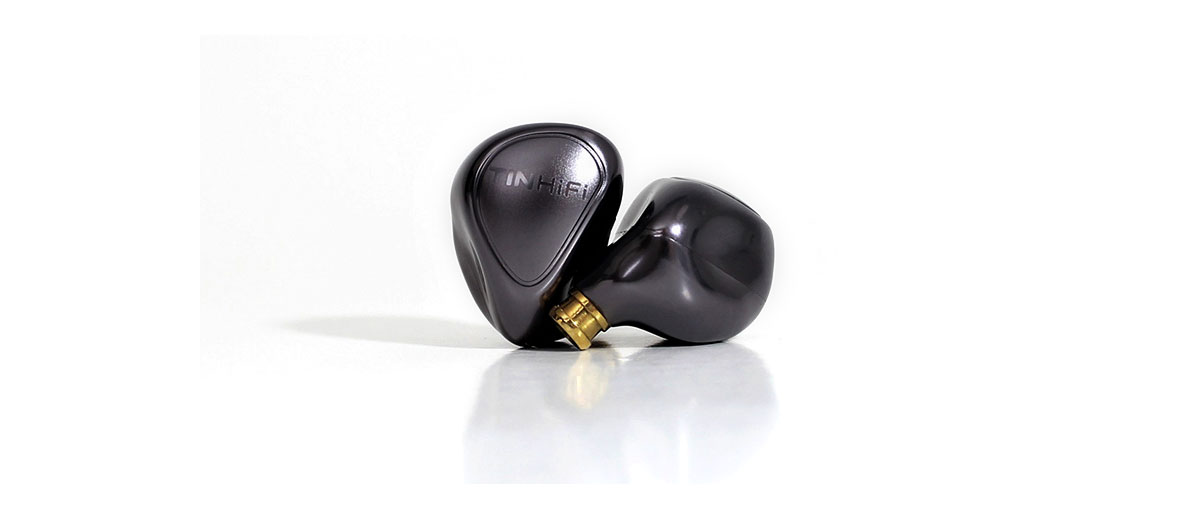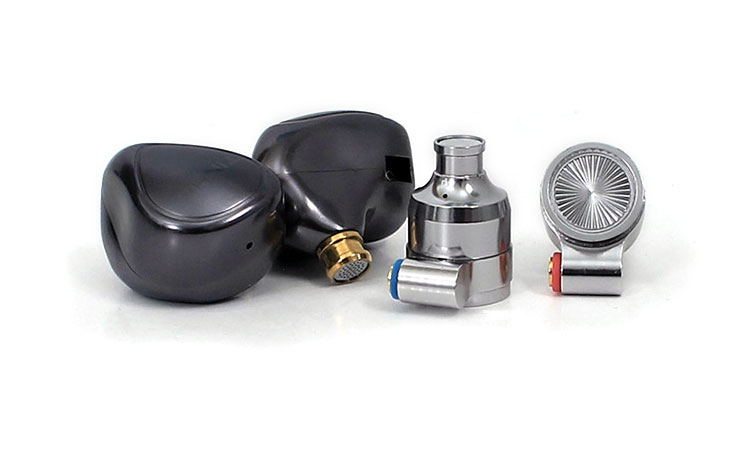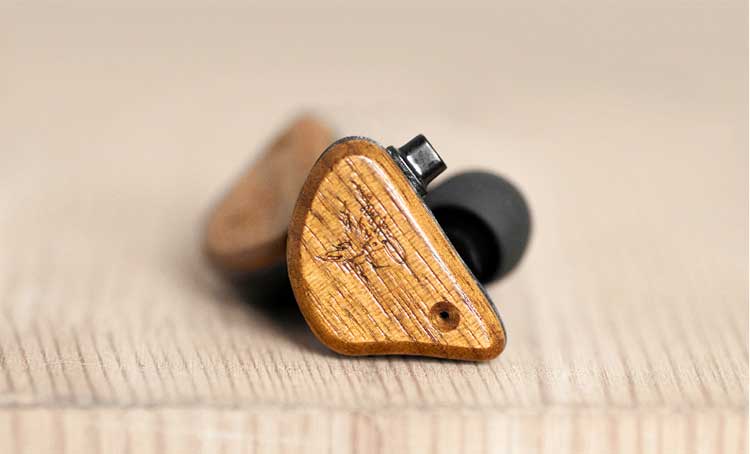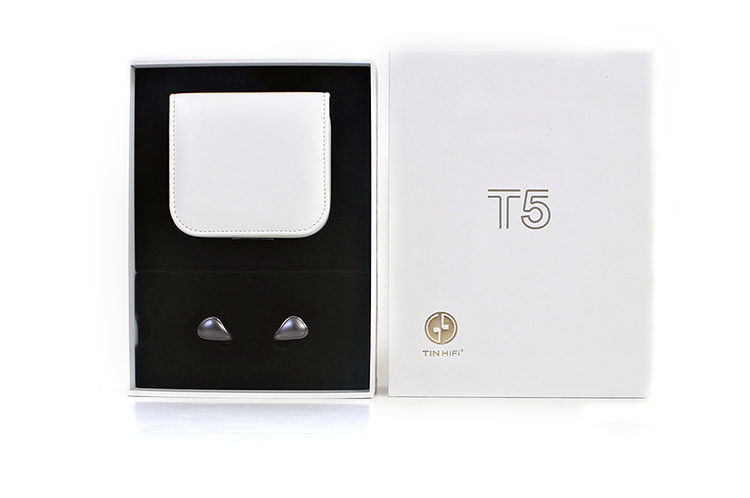Sound Impressions
Summary
I must note something about the Tin HiFi T5 and is that when I first heard them I was extremely disappointed but after a very long and hard break-in period they became more balanced and more natural sounding. You must break these in and that is my opinion and recommendation before judging them. I put well over 60 hours on them before judging them
Upon the first listen you get a rather elevated mid-bass presence with a relaxed and fairly present midrange section with accentuated highs. A very slight W-shaped sound signature is what my ears perceive with a slight recess in the midrange.
The highest bass presence is mostly in the mid-bass. The midrange section on the other hand is smooth with a good level of detail for this budget level capable of some decent layering but nothing extraordinary. In general, the midrange tonality is smooth with no major peaks.
The treble response is somewhat of a mixed bag however with lots of presence and at times surprises with airiness, good clarity, and sharpness but sometimes becomes harsh, sibilant, and splashy particularly at high volume levels.
Frequency Response
On a tone sweep test, I found the bass to roll off below 30 Hz but still present at 16 Hz where at that point a sharp roll-off occurs. That does fall just around the Tin HiFi T5 listed specification of a 10 Hz bottom end. My ears can only go down to 14Hz regardless.
The bass section does have a rather large hump in the mid-bass that starts at around 60 Hz and goes all the way to past 200 Hz and even beyond. The transition does affect the midrange some by giving the lower midrange a slight amount of deep tonality.
Midrange frequencies are for the most part rather neural but lag behind a decibel or two from the rest of the spectrum. The lower section of the midrange gets treated with some warmth from the upper bass elevation and does give a rather deeper tonality impression, especially with male vocals. Female vocals tend to come through more naturally compared.
Once you hit the high frequencies you run into a large peak at around the 5 kHz point and a few other high spots up to past 8 kHz which is where all the perceived forwardness of the treble comes from in this IEM. There is also a rather sharp and early roll-off at least according to my ears that occurs above 11 kHz.
Musicality
The Tin HiFi T5 is not an analytical IEM but rather a listen-to on-the-go IEM and it does sound rather pleasant on many occasions. For example, Brian Blade’s Crooked Creek sounded rather nice on this IEM. This track usually sounds over-compressed and at times confusing but the T5 does it justice with crisp treble and speedy transient response.
The T5 bass response is rather tight on the bottom end but somewhat loose in the mid-bass section but long as you do no push that volume too high the bass remains well controlled with a medium amount of punch and a good amount of attack.
The midrange output seems a touch recessed but the spectrum range remains intimate with an almost warm character. There does seem to be a high level of detail retrieval especially in the upper midrange and lots of nuances within recordings come through.
The T5 bought out the highs well from the mentioned recording. It remained controlled far as the saxophone is concerned which sounds harsh on some IEMs on this recording. The bass was just there marching along quickly. Attack and decay are done well on the T5 and better than average for this budget level.
Staging
The Tin HiFi T5 is another set that images rather well especially around those high frequencies which can be placed almost anywhere. For example, going back to Crooked Creek once again Brian Blade’s fast-paced drum was well done and the T5 not only kept up with the speed but placed the highs correctly in stage positioning.
The midrange is somewhat internalized and personal while the bass is omnipresent. There is midrange layering but not much and this band seems somewhat narrow with a small amount of expansiveness. I think this IEM does detail retrieving better than layering.
Width is somewhat wide and expansive but the sound does not extend far beyond and out and remains somewhat contained. I do like the amount of height presented which seems to sound as if above the head giving a good effect in many recordings.
Synergy
These IEMs surely like to be limited when it comes to volume levels. They tend to bring out the worst in recordings especially when played loud. Some of the harshness in the high frequencies in particular only happens at loud volume levels so if you have good volume moderation and control these will work well for you but I would not use them for loud music.
Far as power requirements, any 3.5mm equipped source will push these to levels satisfactorily enough for anyone. I almost laughed at the listed specification of a maximum of 4mw though. These puppies took a whole 5 watts from my Asgard and they just smiled back at me. That specification is probably the minimum power requirement.
One thing I did note is that they do like flat and even some bright sources. The T5 worked well with my Hifiman Supermini which is bright sounding but does not have tone control and since the T5 has that slight bass elevation it worked out well as a combo.
Selective Comparisons
Tin HiFi T4
Technical Design
I insist once again that the T5 should have been the introduction of a new line because appearance-wise they have a totally different look, different in materials, design, and construction from all the past Tin HiFi T line.
The Tin HiFi T4 is made of very light aluminum and once inserted in the ear only the rubber tip is felt making this particular design for me very comfortable to use although some beg to differ.
The Tin HiFi T4 retains all the build characteristics of all the previous models of the T line except the T2 Plus and uses a similar all-metal construction cylinder shape with the MMCX connector. The shells are made from a two-piece assembly and the output shaft is an integral part of the front section.
Stock connectivity is a silver-plated twisted 4 core instead of the all-black T5 cable design but I like the T5 wire most because it seems softer, while at the same time employing a more robust set of hardware and it just feels better.
The included storage cases are somewhat similar but only contrast in color and the top design. The T5 case is white while the T4 comes with one that has a natural leather look. Honestly, I lean more to the T4 case because to me it seems better in quality plus the white to me seems too bright.
Tip selection is similar but the T4 does not come with output nozzle filters so that is an additional positive step up.
Performance
My personal opinion is that the T4 has a softer and somewhat safer tuning while the T5 is more aggressively tuned with more forwardness and a brighter top end.
There was a trade-off here from a smooth non-fatiguing sound signature for one that is brighter with a finer production of detail and less veil but at the expense of going over the edge if pushed too hard.
The bass response seems quicker and more responsive on the T5. The midrange is definitely more recessed on the T4 and the highs as well making the T4 a softer listen with less fatigue. At times the T5 can introduce some fatigue and I believe it was an exchange for a more dynamic response with a higher level of detail with more forwardness.
Imaging is wider as well with the newer T5. The T4 seems warmer in character and at the same time seems to have a more personal and smaller soundstage compared to the T5. The T5 also seems to gain some height, especially in the high frequencies.
Little Dot Cu WYN
Technical Design
Most people are not too familiar with the Little Dot line of IEMs and honestly, they deserve some mention. The Cu WYN for example is a more traditional style IEM with a hybrid design that consists of a single dynamic driver with a BA tweeter and is marketed as a bass IEM.
I say traditionally in a sense that the shell is the usual empty shell with a backplate with the only twist is perhaps the wooden backplate.
One of my disappointments with the Cu WYN is the included accessories for instance the cable assembly. It does come with a hockey puck style storage case made of metal but the included cable does not match the quality of the IEM.
Performance
The Cu WYN is an IEM I can relax with because of its warm laid back sound signature with highs that are clear but never intense. Although the Cu WYN is labeled as a bass IEM the midrange and treble are good as well just more relaxed compared to the T5.
Bass volume is equal and the bass first marketing of the WYN is off but I honestly give the bass speed to the T5 which seems to have the better transient response. All the other frequencies are not as forward however that tends to make it lose out on some micro details but fatigue levels are increased on the T5 due to the extra detail and sharpness.
Staging is not stellar on neither of these sets and at this budget level, it does not get much better to be honest. I would give a win to the T5 because of the added width and frontal stage. The WYN has a closer inward stage with a touch of height and some width but the T5 can do panning better and the high frequencies tend to be the highlight in imaging of the two.
Our Verdict
Is the Tin HiFi T5 a leap forward in price to performance ratio as its ancestor the T2 was? Not really to be honest. Is it a good buy by today’s standards? Yes, it is. Is it a step forward from the T4? The answer again is yes.
It seems Tin HiFi is heading in a different direction and is doing some deep digging into new techniques in manufacturing. A maturity has blossomed in the T5 like the use of titanium which turns out to have great thermal qualities ideal for IEM shells and the use of DOC in their driver assemblies. There is even a step-up level in the stock cable assembly.
Sound-wise there is a level up in detail and upper-frequency presence but at the cost of harshness but this only occurs at high volume levels. There is also some added spaciousness to the staging which is a plus.
A nice storage case is included with a decent amount of tips, a nice cable assembly that alone would probably cost half of the total item cost plus a Titanium body IEM with a redesigned driver that presents a level of audio detail production like the Tin HiFi T5 is a safe purchase in my opinion.
Tin HiFi T5 Specifications
- Driver Unit 10mm DOC Driver
- Sensitivity 103 decibels +/- 1db @ 1 kHz 0.126V
- Frequency Response 10 Hz – 20 kHz
- Impedance 48 ohms +/-15%
- Rated Max Power 3 / 4 mW
- Interface Gold Plated 2 Pin Connector
- Plug 5mm
- Conductor Cable 8mm 40 strands 0.05% oxygen-free copper +200D Kevlar 4 core Black PU Cable
- Length 25m
- Housing Color Titanium Grey





